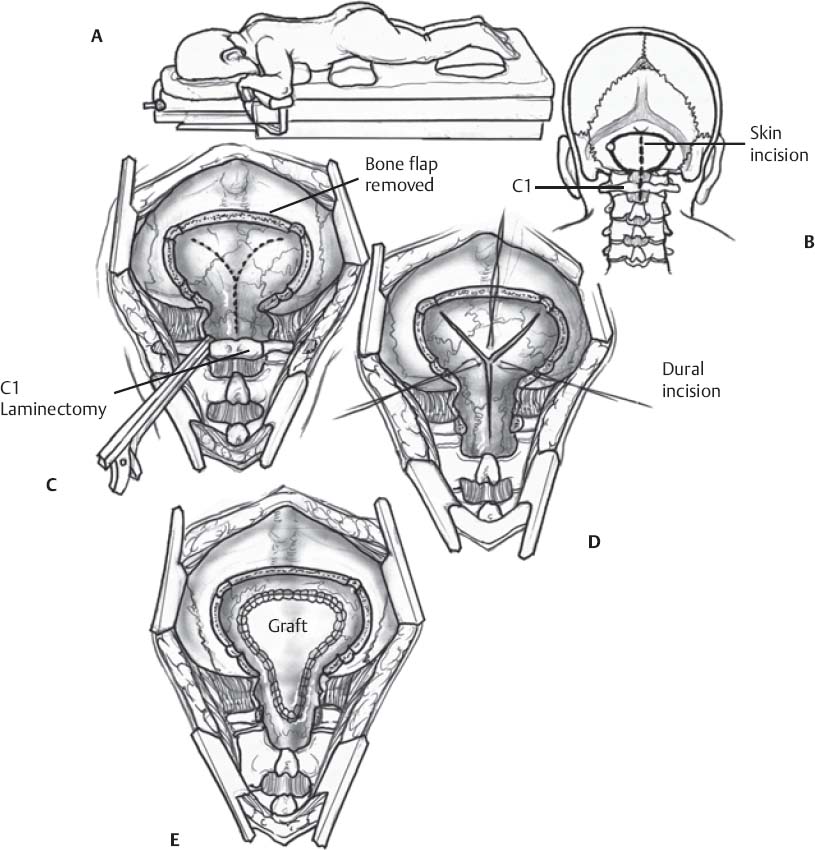♦ Preoperative
Operative Planning
- Review imaging (sagittal magnetic resonance imaging is the study of choice)
- Assess level of descent of posterior fossa structures; this determines the level of spinal exposure that will be necessary
- Note level of transverse sinus, which will be low in Chiari II
Special Equipment
- Dural substitute if performing dural opening procedure (the authors use bovine pericardium in children, but pericranium, autologous fascia, cadaveric dura, Gore-Tex [W. L. Gore & Associates, Inc., Elkton, MD], etc., are acceptable)
- Ultrasound for nondural opening technique
Operating Room Set-up
- Mayo stand at head of bed
- Prone table with bolsters
- Room should be warm to ensure normothermia (heat lamps for infants)
- Intravenous antibiotics with skin flora coverage (cefazolin 2 g for adults, 30 mg/kg in pediatrics) should be given 30 minutes prior to incision
- Single preoperative dose of dexamethasone
Intraoperative Neurophysiologic Monitoring
- Somatosensory evoked potential (SSEP) and brain stem auditory evoked response (BAER) monitoring (institutional evidence to support its use)
- Obtain baseline prior to positioning
- Repeat potentials after positioning to ensure that the neck is not excessively flexed
- Continuous monitoring during case
♦ Intraoperative
Positioning (Fig. 160.1A)
- Patient prone
- Head supported in neutral position on padded horseshoe in children up to age 2 to 3 years, and in either padded horseshoe or three-pin Mayfield fixation in older children and adults
- Neck flexed until two fingers can just fit between chin and upper sternum
- Eyes are checked to prevent compression by horseshoe
- All pressure points are padded (adhesive foam rubber may be placed on bony prominences prior to turning; this is particularly important in thin children)
Planning of Minimal Shave
- Use disposable razor
- Occipital protuberance to hairline in midline
Drape
- 3M drapes placed along sides of neck to prevent prep solutions from threatening the security of the endotracheal/nasotracheal tube in young children with uncuffed tubes or causing corneal damage
- Four towels and Steri-Drape
- Split or fenestrated sheet
Planning of Sterile Scrub
- Betadine detergent scrub and sterile gloves for 5 minutes
- Sterile towel to dry
Mark Incisions (Fig. 160.1B)
- Inion to C2 spinous process
- In patients with short hair, may attempt to keep incision above hairline
< div class='tao-gold-member'>
Fig. 160.1 Schematic of posterior fossa decompression for Chiari malformations. (A) Patient postioning. (B) Incision marking. (C) Bony decompression. (D) Dural opening is performed via Y-shaped incision. (E) Closure of the dura.
Only gold members can continue reading. Log In or Register to continue
Stay updated, free articles. Join our Telegram channel

Full access? Get Clinical Tree







